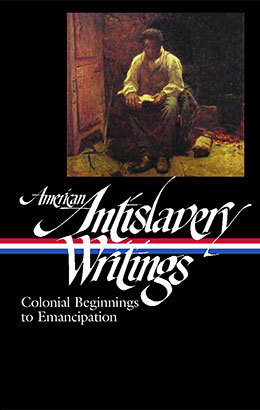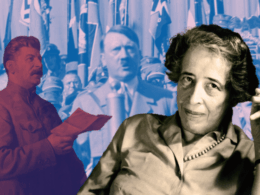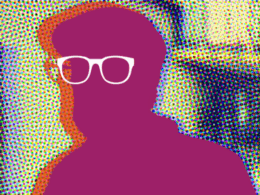James G. Basker, president of the Gilder Lehrman Institute of American History and Richard Gilder Professor of Literary History at Barnard College, Columbia University, spoke with us about the recent publication of American Antislavery Writings: Colonial Beginnings to Emancipation, which he edited for The Library of America.
LOA: This is not a collection of political pamphlets, but an anthology that ranges much more widely among writers and genres—poems, personal narratives, sermons, children’s literature. Why? What were you aiming to show or achieve with this book?
Basker: The origins of antislavery beliefs lie beyond politics: they are moral, religious, intellectual, imaginative. It is through the literature (broadly defined) and collective imagination of society that antislavery ideas first flourished, exerted influence, and ultimately prevailed. Writers, not politicians, led the way and were sometimes stunningly ahead of the times: there is a short story in this collection (“A Dream,” published under the pseudonym T. T.) that imagines the election of the first black American president in 1831, more than 175 years before the election of Barack Obama.
LOA: The antislavery movement accomplished its purpose in the 1860s, and slavery was abolished. Why collect these writings now? What do they have to say to contemporary readers?
Basker: First, to help us overcome historical amnesia. For a hundred years, roughly 1865 to the 1960s, the centrality of slavery in American history was systematically repressed and forgotten. This literature reconnects us with one of the longest-running and most crucial themes in American history.
Second, it reminds us that the evil of slavery persisted far too long, and that voices arose to denounce it as early as the 1680s and eventually multiplied and gathered sufficient strength to bring change.
LOA: What was most exciting discovery you made in course of researching the volume?
Basker: The surprising number of white antislavery writers from southern and slave-holding states: not only the Grimké sisters from South Carolina, but Arthur Lee, Patrick Henry, and St. George Tucker from Virginia, Peter Clemmons from North Carolina, Martha Griffith Browne from Kentucky, James Birney from Kentucky and Alabama, and Joseph Evans Snodgrass from Maryland, among others. Most surprising of all, perhaps, was the petition drafted by “the Virginia Society for Promoting the Abolition of Slavery” at its meeting in Manchester, Virginia, on April 5, 1791, and submitted (along with petitions from Maryland and four other states) to the U.S. Congress later that month—an antislavery petition from a slave-holding state, during a period when we tend to think that everyone accepted slavery as a political necessity for the nation.
LOA: What do you think will be the most surprising thing readers learn about the antislavery movement?
Basker: Two things stand out. First, how early the first fiercely critical opponents of slavery began to speak out, more than 100 years before the radical Garrisonians of the 1830s or Harriet Beecher Stowe in the 1850s: the Moravians in 1688, George Keith in 1693, Samuel Sewall in 1700, John Hepburn in 1715, Elihu Coleman in 1733, Benjamin Lay in 1737, John Woolman and Anthony Benezet in the 1750s, and so on.
Second, calling it a “movement” is a reductive misnomer. Antislavery sensibilities and behaviors were far more diverse and diffuse than any single “movement” spanning the 1680s to 1865: every act of resistance or rebellion by a slave, every owner’s voluntary manumission or emancipatory purchase of a slave, every religious congregation that banned or condemned slaveholders, every school founded to educate black children or minister willing to baptize them, every state that abolished slavery (Vermont first, in 1777) or court that supported petitions for freedom (Massachusetts, 1780), every federal act that curbed slavery (Northwest Ordnance, 1787) or the slave trade (transatlantic trade outlawed, 1808), every expression of antipathy or disapproval of slavery, or local action against it, drained something from its power, its aura of inevitability or sustainability.
LOA: What’s your favorite piece in the collection?
Basker: So many leap to mind: Frederick Douglass’s novella “The Heroic Slave” or Louisa May Alcott’s edgy short story “An Hour” or Sumner’s emotional “Eulogy on Abraham Lincoln,” but my single favorite has to be “The Anti-Slavery Alphabet” composed by Hannah and Mary Townsend in 1847, for little children learning to read. Each letter of the alphabet is accompanied by a simple but powerful rhyme that would inculcate antislavery feelings in beginning readers, including feelings of guilt by implication. Under the letter “M,” for example, comes this: “M is the Merchant of the north, / Who buys what slaves produce— / So they are stolen, whipped and worked, / For his, and for our use.”
LOA: The writers presented in the volume seem surprisingly diverse for this early period—black and white, women and men. Is this remarkable or unusual?
Basker: Once we get past the limitations of the traditional canon, we find considerable numbers of black writers, women writers, and others we often think of as barred from the literary world in the eighteenth and nineteenth centuries. (This is why we should never unthinkingly subject ourselves to the contents of a single textbook or anthology—there is always so much that has been left out and left behind.) Black writers found print a powerful medium in which to testify, to bear witness to what would otherwise have been incredible—indeed, defenders of slavery almost to the end tried to deny the veracity of slave narratives by Olaudah Equiano, Frederick Douglass, Solomon Northup, and the twenty others included here.
Women writers, though denied access to most issues in the public sphere, wrote compellingly about slavery because it was so deeply enmeshed with the personal and moral themes such as family, relationships, abused children, sexual vulnerability, physical and emotional suffering that they were supposed to understand more deeply than male writers. Not surprisingly, almost from the beginning the issue of slavery gave rise to concerns about the condition of women in society, and the women’s movement was to build on the momentum of the anti-slavery campaign.
LOA: The collection includes several canonical American writers—Emerson, Thoreau, Melville, Stowe. What is the relationship between these and the less renowned writers, or, more generally, between antislavery writing and American literature as we’re taught it?

Basker: From the end of the Civil War until the late twentieth century, slavery seemed to be too painful or unpleasant a topic to dwell on and, perhaps for some, also politically repugnant. As a result, the inherited canon of American literature and the general sense of “classic” American literature seems almost to have been whitewashed of the topic. Who knew that Henry Wadsworth Longfellow or Louisa May Alcott wrote antislavery literature? One purpose of this collection is to restore to view major pieces of literature by well-known figures—Noah Webster, Benjamin Franklin, Longfellow, Thoreau, Emerson, Dickinson, Alcott—that address the issue of slavery, and to make visible also their relation to the texts and topics of their contemporaries, most of them forgotten today. Specific lines of influence can be drawn—women writers inspired by Phillis Wheatley, Whittier inspired by Sarah Wentworth Morton, etc.—and a larger sense of the upwelling of many voices over time can give us better understanding of how central slavery was to the general awareness of Americans long before the political crises of the 1850s or the Civil War that followed.




